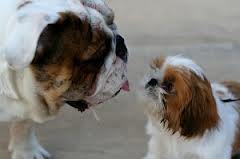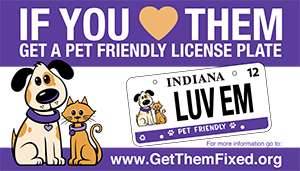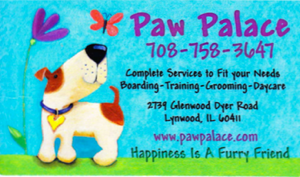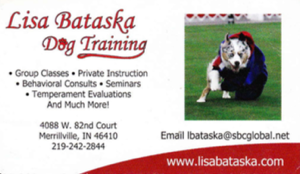New Home Introduction Steps
 Adding another dog to your household can bring you and your current dog more fun and companionship. However, it’s important to realize that your current dog, might feel similar to how you might feel if your parents picked your friends and then told you to share your toys with them. In the long run, things will probably work out fabulously, but in the beginning it’s a very smart idea to take a few extra steps to make everyone feel good about the new arrangement. This article provides some guidelines for making smooth and safe introductions and ensuring that your dogs’ relationship gets off to a great start. Maximizing the potential for a great relationship between your new dog and your current dog is a two-step process. It involves the actual introduction and then management of the new dog in your home. We’ll start with introductions and then give you guidelines for helping your dogs through the initial transition weeks of being together in your home.
Adding another dog to your household can bring you and your current dog more fun and companionship. However, it’s important to realize that your current dog, might feel similar to how you might feel if your parents picked your friends and then told you to share your toys with them. In the long run, things will probably work out fabulously, but in the beginning it’s a very smart idea to take a few extra steps to make everyone feel good about the new arrangement. This article provides some guidelines for making smooth and safe introductions and ensuring that your dogs’ relationship gets off to a great start. Maximizing the potential for a great relationship between your new dog and your current dog is a two-step process. It involves the actual introduction and then management of the new dog in your home. We’ll start with introductions and then give you guidelines for helping your dogs through the initial transition weeks of being together in your home.
Introductions
- Leave your current dog at home when you pick up your new dog. One of the worst things you can do is to just throw the two of them together in your car and hope for the best!
- Introduce your dogs on neutral territory, like on a short walk through your neighborhood, in a nearby park or in a friend’s yard. Have two people, one to handle each dog, while keeping the dogs on leashes.
- To minimize tension, try to keep the dogs’ leashes loose so that they’re not choking or feeling pressure on their throats.
- Don’t force any interaction between the dogs. If the dogs ignore each other at first, or if one dog seems reluctant to interact with the other, that’s okay. Give both dogs time to get comfortable. They’ll interact when they’re ready.
- Make the introduction positive and light-hearted. As the dogs sniff and get acquainted, encourage them in a happy tone of voice. At first, allow just a few seconds of sniffing. Then gently pull the dogs away from each other and let them walk around with their handlers. After a minute or two, you can lead the dogs back together and allow another several seconds of sniffing. These brief greetings help keep the dogs’ interactions calm and prevent escalation to threats or aggression. You can also interrupt their interactions with simple obedience. After a brief sniff, lead the dogs apart, ask them to sit or lie down, and then reward them with treats.
- Closely observe the dogs’ body language. Their postures can help you understand what they’re feeling and whether things are going well or not. Loose body movements and muscles, relaxed open mouths, and play bows (when a dog puts his elbows on the ground and his hind end in the air) are all good signs that the two dogs feel comfortable. Stiff, slow body movements, tensed mouths or teeth-baring, growls and prolonged staring are all signs that a dog feels threatened or aggressive. If you see this type of body language, quickly lead the dogs apart to give them more distance from each other. Again, practice simple obedience with them individually for treats, and then let them interact again—but this time more briefly. Please see our Canine Body Language article for illustrations of dogs showing what various feelings look like in dog body language.
- Once the dogs’ greeting behaviors have tapered off and they appear to be tolerating each other without fearful or threatening behavior, you’re ready to take them home. Before you take them inside, walk them together around your house or apartment building.
- Be patient. Bringing a new dog home requires that everyone make some adjustments, especially your current pets. And it will take time for your dogs to build a comfortable relationship.
The First Couple of Weeks at Home
- It’s crucial to avoid squabbles during the early stages of your dogs’ new relationship. Pick up all toys, chews, food bowls and your current dog’s favorite items. When dogs are first forming a relationship, these things can cause rivalry. These items can be reintroduced after a couple of weeks, once the dogs have started to develop a good relationship.
- Give each dog his own water and food bowls, bed and toys. For the first few weeks, only give the dogs toys or chews when they’re separated in their crates or confinement areas.
- Feed the dogs in completely separate areas. Pick up bowls when feeding time is over. (Some dogs will compete over bowls that recently contained food.)
- Keep the dogs’ playtime and interactions brief to avoid overstimulation and overarousal, which can lead to fighting.
- Confine the dogs in separate areas of your home whenever you’re away or can’t supervise their interactions.
- Give your new dog his own confinement area. When the dogs are separated, it might be a good idea to let them get to know each other through a barrier, like a baby gate. Your new dog should be gated in his confinement area, and your current dog should be free to move around and visit when he wants to.
- When the dogs are interacting, interrupt any growling or bullying behavior with a phrase like “Too bad,” and then quickly separate them for several minutes. Then allow them to be together again. If your dogs seem to react poorly to each other often, don’t hesitate to contact a professional who can help you, such as a Certified Applied Animal Behaviorist (CAAB), a board-certified veterinary behaviorist (Dip ACVB) or a Certified Professional Dog Trainer (CPDT) who’s experienced in treating problems between dogs. Please see our article, Finding Professional Help, to locate a professional in your area.
- Be sure to sincerely praise your dogs when they are interacting nicely.
- Spend time individually with each dog. Give each of them training time with you and playtime with other dogs outside your home.
- If your dogs are very different in age or energy level, be sure to give the older or less energetic one his own private space where he can enjoy rest and down time.





